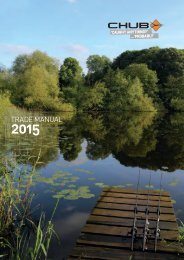CHAMPAGNE
This combination of weather influences makes for constant, moderate precipitation – a near-ideal pattern of rainfall that provides the vines with just enough water to produce quality fruit. Mean annual rainfall for the Champagne region as a whole is close to 700mm, ranging from 600mm to 900mm depending on the area.
This combination of weather influences makes for constant, moderate
precipitation – a near-ideal pattern of rainfall that provides the vines with just
enough water to produce quality fruit. Mean annual rainfall for the Champagne
region as a whole is close to 700mm, ranging from 600mm to 900mm depending
on the area.
Create successful ePaper yourself
Turn your PDF publications into a flip-book with our unique Google optimized e-Paper software.
Pruning<br />
16<br />
Picking up of the vine shoots<br />
Pruning<br />
Chablis training, before pruning Cordon training, before pruning<br />
Chablis-pruned and tied-up vine Cordon-pruned and tied-up vine<br />
Pruning commences in the month following<br />
the harvest, as soon as the leaves start to fall,<br />
and continues until mid-December. It resumes<br />
in mid-January, after the winter dormant<br />
period, continuing until late March or such time<br />
as the vine reaches the four-leaf stage (when<br />
all pruning must cease). Pruning encourages<br />
the sap to flow towards the fruit-bearing buds,<br />
favouring a good balance of vigour and productivity.<br />
Pruning gives the vine its shape, avoiding<br />
tightly packed foliage so as to encourage<br />
photosynthesis and create space for air to<br />
circulate between the clusters. Pruning also<br />
regulates vine development, rejuvenating ‘leggy’<br />
plants by hard pruning at regular intervals.

















